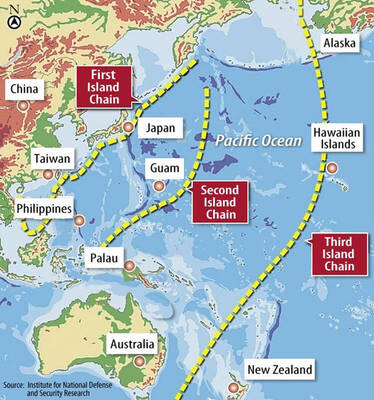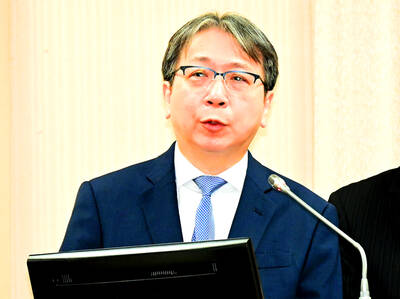Intel researchers have discovered a new material that they believe will permit them to overcome one of the most serious obstacles facing chip makers as they struggle to shrink computer chips to ever-smaller dimensions.
The announcement, scheduled at a technical conference in Japan yesterday, could be a crucial step forward because the industry has been increasingly plagued by the problem of preventing electrical current from leaking outside its proper path as each generation of chips has moved closer to fundamental physical limits.
With today's transistor gates -- which consist of a piece of material that functions like a water faucet for electrical current -- approaching thicknesses of just five atomic layers, computer chips have come to require more power, which causes them to run much hotter.
Intel, the world's largest chip maker, has been struggling with the problem of excess heat as it has moved its manufacturing technology from etchings as small as 130 nanometers to the even narrower 90-nanometer limit. The measure refers to the length of a crucial component in the transistors that are the basic element of each generation.
Intel's chips have been running significantly hotter with each generation and there have been recent reports that its most advanced version of the Pentium, dubbed Prescott, has been delayed because of leakage woes.
The new Intel technology would not come into effect until about 2007, still perhaps three generations of chip advances into the future. The industry is just now making the transition to 90 nanometers. After that it hopes to scale down to 65 nanometers first, followed by a leap to just 45 nanometers, where the new material, which Intel refuses to identify, would come into play.
The semiconductor industry has been searching intensely for a new material to replace silicon dioxide, which is used as an insulator between the gate and the channel through which current flows when a transistor is switched on.
Intel has had a small team working on the problem of a replacement for silicon in its Hillsborough, Oregon, research laboratories for five years in an effort to continue to advance chip making technology at the relentless pace of Moore's law, which predicts that the number of transistors that can packed into the same space should double every 18 months.
"We want to continue on these short cycles," said Sunlin Chou, senior vice president and GM of Intel's Technology and Manufacturing Group, "even though there are those in the industry who are implying that we can't keep this pace."
A number of independent researchers and competitors said that the Intel announcement came in the most important research area in the chip industry. But several noted that the company's research paper was highly unusual in that it lacked technical details necessary for scientists to assess the impact of the announcement.
"This is going in the direction the whole industry is moving," said Bernard Meyerson, an IBM vice president who is in charge of the company's semiconductor research. But he warned that it was difficult to judge Intel's achievement because the company had chosen not to name the materials it is planning to use.

The US government has signed defense cooperation agreements with Japan and the Philippines to boost the deterrence capabilities of countries in the first island chain, a report by the National Security Bureau (NSB) showed. The main countries on the first island chain include the two nations and Taiwan. The bureau is to present the report at a meeting of the legislature’s Foreign Affairs and National Defense Committee tomorrow. The US military has deployed Typhon missile systems to Japan’s Yamaguchi Prefecture and Zambales province in the Philippines during their joint military exercises. It has also installed NMESIS anti-ship systems in Japan’s Okinawa

‘WIN-WIN’: The Philippines, and central and eastern European countries are important potential drone cooperation partners, Minister of Foreign Affairs Lin Chia-lung said Minister of Foreign Affairs Lin Chia-lung (林佳龍) in an interview published yesterday confirmed that there are joint ventures between Taiwan and Poland in the drone industry. Lin made the remark in an exclusive interview with the Chinese-language Liberty Times (the Taipei Times’ sister paper). The government-backed Taiwan Excellence Drone International Business Opportunities Alliance and the Polish Chamber of Unmanned Systems on Wednesday last week signed a memorandum of understanding in Poland to develop a “non-China” supply chain for drones and work together on key technologies. Asked if Taiwan prioritized Poland among central and eastern European countries in drone collaboration, Lin

ON ALERT: Taiwan’s partners would issue warnings if China attempted to use Interpol to target Taiwanese, and the global body has mechanisms to prevent it, an official said China has stationed two to four people specializing in Taiwan affairs at its embassies in several democratic countries to monitor and harass Taiwanese, actions that the host nations would not tolerate, National Security Bureau (NSB) Director-General Tsai Ming-yen (蔡明彥) said yesterday. Tsai made the comments at a meeting of the legislature’s Foreign Affairs and National Defense Committee, which asked him and Minister of National Defense Wellington Koo (顧立雄) to report on potential conflicts in the Taiwan Strait and military preparedness. Democratic Progressive Party (DPP) Legislator Michelle Lin (林楚茵) expressed concern that Beijing has posted personnel from China’s Taiwan Affairs Office to its

BACK TO WORK? Prosecutors said they are considering filing an appeal, while the Hsinchu City Government said it has applied for Ann Kao’s reinstatement as mayor The High Court yesterday found suspended Hsinchu mayor Ann Kao (高虹安) not guilty of embezzling assistant fees, reducing her sentence to six months in prison commutable to a fine from seven years and four months. The verdict acquitted Kao of the corruption charge, but found her guilty of causing a public official to commit document forgery. The High Prosecutors’ Office said it is reviewing the ruling and considering whether to file an appeal. The Taipei District Court in July last year sentenced Kao to seven years and four months in prison, along with a four-year deprivation of civil rights, for contravening the Anti-Corruption